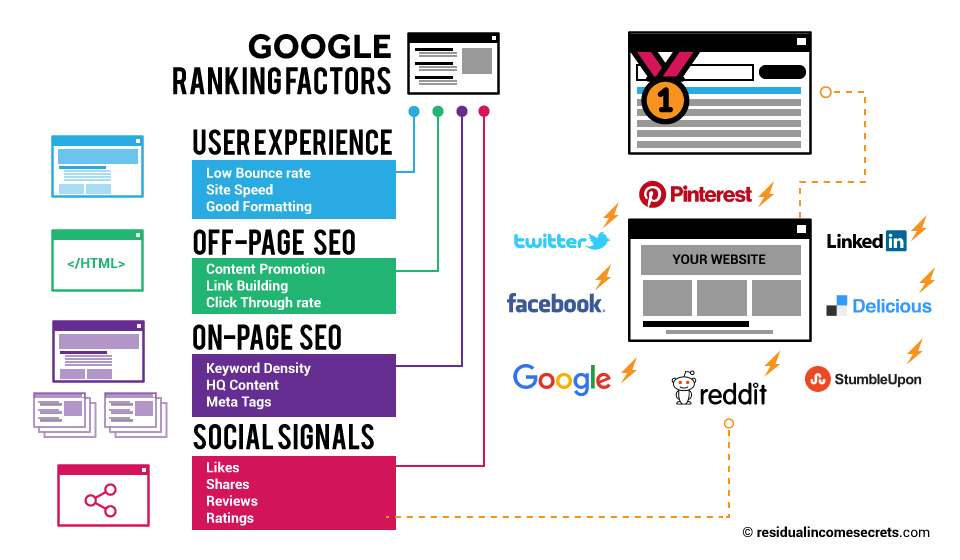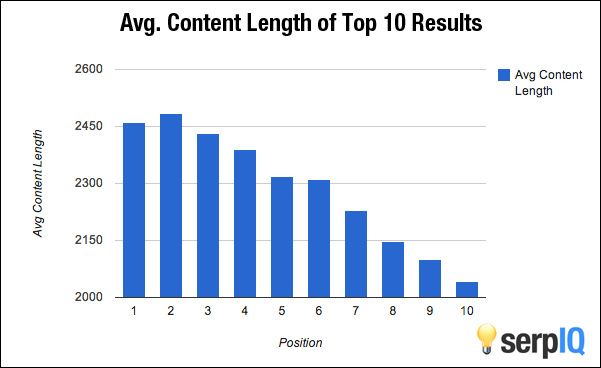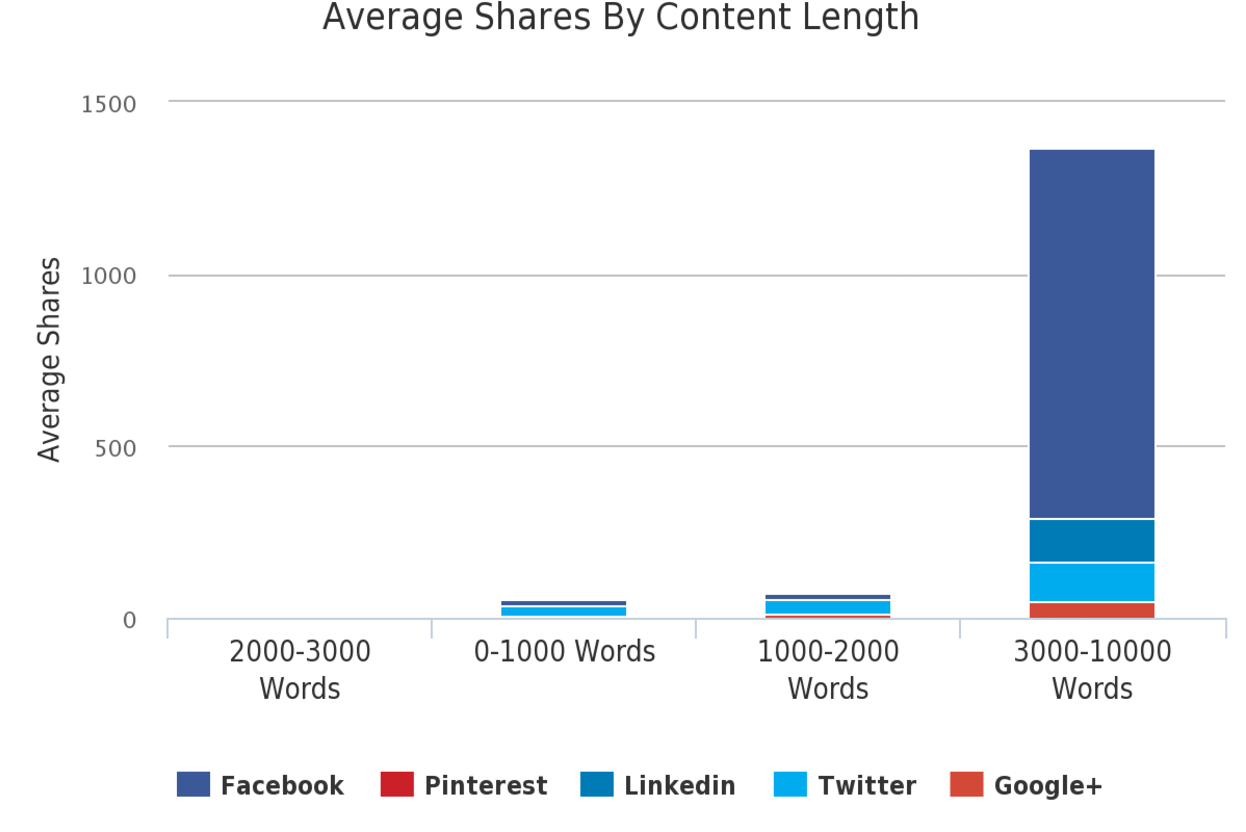Google Ranking Factors To Take Into Account for 2020
Have you found that the SEO tools you’ve used in the past aren’t working as well anymore?
There’s a reason – but it hasn’t been widely disseminated yet. So, let me share some highly actionable tips with you, right here…
There are some significant changes to the way that Google ranks your page, and it’s important to get familiar with them so that your 2020 is a prosperous one. We’ve been doing the research so that you don’t have to. Read on for the Google Ranking Factors to take into account for 2020.
I tricked you
See what I did there? I employed the APP formula to introduce my article – and this is a great way to help your blog post or your web-page jump up the rankings in 2020.
Really? How?
I did it again! With a Bucket Brigade.
Are you tripping?
And again. We’ll be sharing a bunch of tips that you can act to make your copy more engaging, as well as a whole load of advanced SEO strategies that you really need to know about.
SEO is changing
It’s no longer enough to just optimize your page with keywords.
Of course, that helps, but Google has publicly confirmed that there’s a new kid on the block (and it’s not Marky Mark!).

Google now rate UX (user experience) over content, analyzing the behavior of your visitors after they’ve left the search page. They watch and learn because they’re looking for the best user experience so that people keep coming back to Google.
RankBrain is watching
Google’s RankBrain is watching. If a user clicks on your page, quickly discovers that it’s not what they’re looking for, and leaves, you slip down the Google ranking. It doesn’t matter how brilliant your optimized SEO content is, if you’re not keeping your visitors, you’ll slip down the list faster than a Hollywood star’s reputation.
APP
The introduction of this article used the APP formula and it’s a valuable tool for grabbing an audience right from the start, making sure that they’ll stay.
APP means Agree, Promise, Preview. You may very well do this instinctively, but it’s good to have a bit of positive reinforcement, isn’t it!
Bottom line?
You’ve probably got many fantastic articles that no-one’s reading. Or worse still, they start reading and get bored.
A TV show has 5 minutes to get you hooked. If you’re not interested in then, you switch over. A radio show has 1 minute! Wow – that’s tough.
Do you want to know what’s tougher?
You have 2 seconds to convince an audience to stick around on the web. Yes, 2 seconds!
And I did it again – I visually reinforced my information, with an infographic.
My opening line was my “Agree” statement – “Have you found that the SEO tools you’ve used in the past aren’t working as well anymore?”
My second line was my “Promise” – “There’s a reason – but it hasn’t been that widely disseminated yet. So, let me share them with you.”
My third line was my “Preview” – “There are some major changes to the way that Google ranks your page, and it’s important to get familiar with them so that your 2020 is a prosperous one. We’ve been doing the research so that you don’t have to. Read on for the Google Ranking Factors to take into account for 2020.”
If you’ve read this far, it’s probably worked!
Bucket Brigades
I’ve been purposely peppering this article with Bucket Brigades – they’re statements that stand out from the rest of the text and feel inviting to read.
Look:
I did it again. If you’re scanning a document for the nitty-gritty, your eye is drawn to simple statements that feel like they’re about to provide an answer.
Here’s the deal!
That’s another one. And what’s more, “Look:” is further reinforced, because a couple of lines later, we see “Here’s the deal!” We’re sign-posting to the good bits.
Bucket brigades are short statements, and are a valuable tool for keeping your visitor on your page and, therefore, helping elevate your ranking with Google.
Remember –
Google is becoming more interested in UX behaviors than content. Learn and adapt.
More advanced SEO strategies
We’ve explored some of the copy tips that will help improve your Google ranking factor from the perspective of UX, but many other features will keep you (or get you) closer to the Number 1 slot.
Boost your loading speed
Google has recently confirmed that load speed is a factor that they now use to rank a website in their listings.
But there’s a caveat:
There’s only so much you can do before your efforts are wasted.
What Google is really looking for are websites that load slowly and, regardless of the quality and optimization behaviors of that site, they’ll demote you if your site reincarnates the dreaded World-Wide-Wait.
Again, it comes down to UX – they want users to click and get what they want without having the time to growing a beard and wax their mustache in the meantime.
But there’s a threshold.
It won’t matter if you’re faster than the competitors if your other SEO elements aren’t right. There’s only so fast you need to go before other factors come back to bite.
Test your speed
Google Page Speed Insights is a super-useful tool that analyses the code under the hood of website or webpage, and gives you recommendations for improvements. And because 2020 is the year where Mobile First is going to be a significant SEO trend, it also tells you how you fare with your mobile website as well.
GTMetrix
While Google Page Speed Insights analyses your code, GTMetrix shows you how your page loads for real-life users, so this is possibly more useful in gauging your score on the UX front.
A tip!
It’s all very well checking the speed of your homepage, but it’s useful to test internal pages; especially blog pages. The pages you use to draw traffic towards your website are the ones to check.
Tidy up your SEO
You might have the best website with the best content, but if there are SEO problems, no-one will find you.
I have problems?
Google Search Console is a tool that will help analyze the efficacy of your content. Check out the “Crawl Error” section, which breaks down your list of errors according to DNS, Server Connectivity, and Robot.txt fetch. Perhaps those categories don’t mean a great deal to you but just look at the numbers.
If the tool identifies just a couple of errors, there’s little to worry about (and it doesn’t matter if you don’t understand what the hell it all is). But if it identifies hundreds of errors, you might have stumbled upon your SEO weaknesses, and it will give you some recommendations to help you fix the problem.
Keyword research
Having stated that keyword optimization isn’t the only factor that Google look for, doesn’t mean that you should overlook the importance of decent keyword density.
Here are some insider tips:
Google suggest
Go to a Google search page, and type in your keyword.
Don’t hit enter.
Check out the drop-list of long-tail keywords suggested by Google.
Why?
Because people who have searched for your keyword, have used those long-tail search times to find it. Incorporate more of those suggested terms into your copy, and you’ll be leaping up the rankings.
If only life were that simple. You need to direct traffic towards your optimized page to establish rankings.
Read on.
Übersuggest
No, you’re not calling a cab or ordering ramen.
übersuggest.io is an excellent long-tail keyword tool that might offer some alternatives that Google haven’t identified in their drop-list.
Which keywords are you currently ranking for?
Google Search Console will provide you with some pretty comprehensive information regarding the keywords that you’re already ranking for.
This is useful – but stick on that beige Macintosh, the dark Trilby that mysteriously covers your eyes, and liberate your over-sized magnifying glass – become a spy…
What better way to find out which keywords your competitor sites are ranking for?
Just saying.
SEMRush is an excellent alternative to Google Search Console, and they will allow you to check out any website you like…
Develop your content
Once upon a time, Google ranked you highly if you published lots of quality content on a regular basis.
Not anymore.
They want to find the best result for a given keyword – it doesn’t matter how often you publish. Employing the copy-tips in this article will help you rank more highly. But, it’s also fine to post less frequently – just publish amazing, engaging content.
Dr. Jonah Berger of Penn State University conducted a study into what makes content go viral, and his top finding was “content containing highly actionable content”, which is 34% more likely to go viral via social shares and backlinks.
So, what makes great, actionable content?
Logically, lengthy articles that engage a user is going to help you rank highly with Google in 2020, because their visit will be longer.
But, I thought that people don’t read articles of more than 500 words!?
Not true.

Recent research suggests that the average word count of a highly effective article (in terms of UX duration) is
1890 words
Yes – that’s long, isn’t it. But the average word count of top-ranking blog posts isn’t 500 words – it’s 1890 words.
Of course, it’s essential that those 1890 words are full of excellent, actionable content; otherwise, you’re going to lose your reader.
However, the text is quite intimidating when you’re relaying data, so try creating or finding infographics that represent your findings.
In 2020, one of the trends that will rate your page higher is visual content – presenting information as lists, graphs and infographics will give Google faster access to your content.
Short URLs for blog posts
How often have you tried to share a blog post on Twitter, and the URL has killed the whole Tweet?
Optimize your short URL according to target keyword.
Which is easier to find? –
The keyword here is WFTS Producing
“http://www.writeforthestage.co.uk/single-post/WFTS-Producing”
or
The keyword here is Advanced courses
“http://www.writeforthestage.co.uk/single-post/2017/10/10/Last-chance-for-new-term-of-WriteForTheStage-Intro-and-Advanced-courses”
First 100 words
Include your target keyword within the first 100 words of your text. Google puts more weight on keywords featured in the first 100 words of your copy.
Go back to the beginning of this article and discover “Google Ranking Factors” in the first 100 words.
Include outbound links
Google wants to ensure that your article is a well-rounded, well-researched article with an authoritative tone that people will find useful when searching. Linking out to other pages and sites is a great way of adding authority to your information.
Pages that link-out consistently out-perform those that don’t.
Publish. Relax. Make yourself a coffee.
DON’T!
No-one is going to find your amazingly optimized work if you just leave it there. If Google is ranking you on user visits, you need to get people to find you, by using your well-chosen search terms and, more importantly, by getting them to stay with you for a while.
Get other sites to back-link you
How?
Look for broken links. They’re basically links from other pages that no longer work. You can find them with the “Check my links” extension for Google Chrome. Tell it where to look, and it will identify which of the links on any given page are no longer active. You’ll be surprised at what you might find.
Look for a page that covers your niche. Find a broken link, and contact the site owner, politely informing them that the link no longer works. Suggest that your own link could be a great replacement.
You’ll be doing them a favor. Twice. Informing them of the broken link, and saving them the hassle of having to search for a new one.
Wrapping up!
Employ these copy and SEO tips for a high ranking 2020- APP and Bucket Brigades; optimize your loading speeds; and tidy up your SEO.
If you have any comment or question, feel free to leave a message below!


